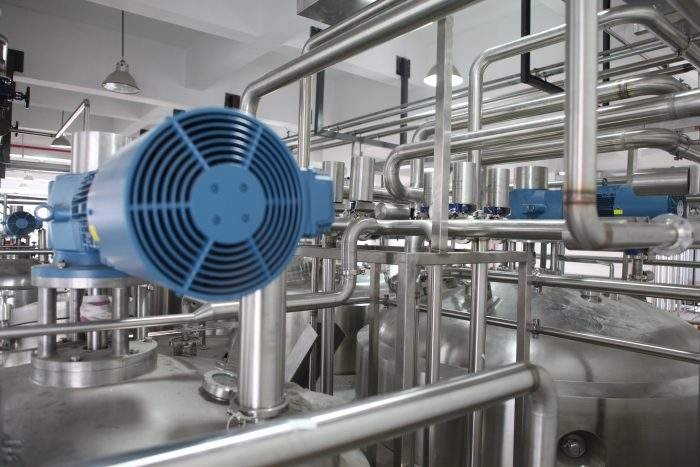Everything You Need To Know About Linear Rails

Linear actuators are designed specifically for moving a load from one point to another. It can be either up and down, side to side or forward and backward. There are a range of options in terms of linear actuators. Are you looking for a solution that will provide precise, smooth movements and cope well with unusual loads? A linear rail actuator is likely to be the solution of choice. Find out more about linear rails. Find some of their advantages and where they are most commonly used.
What are linear actuators?
Actuators are usually powered by either electricity, pneumatics or hydraulics. These move loads from one position to another. They can be found across all industries. It can be heavy industrial plants through to precision manufacturing. Linear motion systems are commonly powered by pneumatics or hydraulics. It is because these forms of energy are ideal in many ways for producing linear movement. However, sometimes electricity can be an excellent choice where accuracy of movement and control over acceleration and deceleration are important. In these situations, electric motors can be used to create linear motion through various solutions. These may be like ball screws, which we will look at in a moment.
What is a linear rail actuator?
Standard linear actuators have a solid body which moves the load. It uses solutions such as an extending rod. Here the limit of the motion is defined by the housing from which the slider extends. A linear rail actuator, however, contains a stationary base. It also has a load bearing carriage which travels along a rail. This is usually made of rigid aluminium. A common linear rail actuator used in linear motion systems is the ball screw actuator.
In a linear ball screw actuator, a threaded shaft provides ball bearings with a helical path. Around this they move, contained within the load mount. The use of these ball bearings means that the system has very low friction compared with alternatives like the screw and nut version. It makes them much more efficient. They are also high-precision solutions. They give the advantage of providing accurate movement and repeatability in environments where precision of movement is critical. Linear balls screws also provide a greater thrust force. These can carry heavier loads than other linear actuators.
Benefits of linear rails
Linear rail actuators are not the ideal solution for every application; where a hygienic environment is required, linear rods are often the solution of choice, and where the linear motion system needs to integrate with other movable equipment or parts, the rail assembly can be an obstacle. However, linear rails do offer some distinct advantages:
- Accuracy: linear rails are manufactured to tighter tolerances than alternatives like a rod actuator. This ensures that the movement of the load is smooth and consistent.
- Stability: the rails prevent the load from rotating, with double rail configurations available where additional support is required.
- 45-degree contact angle: this means that linear rail actuators will bear an equal load in radial, reversed radial and lateral directions.
- Unusual load bearing capacity: because linear rails are available in specialist configurations, they can be adapted to carry wide or heavy loads.
- Space saving: because the whole assembly is no longer than the rail, linear rails are ideal in environments where space is lacking. Rails are also available in miniature, compact and reduced height options.
Linear rail applications
Linear rail actuators can be found in a wide range of processing and manufacturing plants, carrying out jobs from precision, lightweight movement through to thousands of kilograms and large loads. Their limitless travel range makes them ideal for settings where other solutions would fall short in terms of distance of travel. This means that identifying every instance where a linear rail could be a suitable solution for linear motion would create an almost endless list, however, here are some of the more common applications where you might expect to find a linear rail actuator:
Overhead transport of goods
Loads do not necessarily have to be carried above the rail; in factories where large or heavy loads must be carried across distances without impinging on walkways and floor-level equipment, the rails can be mounted up high with the load centred beneath the rail and bearing block.
Gantry robots
Cartesian robots can be seen working in many industrial plants and can be used in processes from packaging to semi-conductor manufacture. They are usually required to move across the X, Y and Z axis and are often set up with a ball screw actuator as the driver, and two or three rail axes working in parallel to provide greater moment capacity.
Processing environments
Linear rail actuators are clean and quiet, and although they are not contained within a single sealed unit they are suitable for high level clean-down processes and do not have obvious sites where dirt or bacteria can build up.
Machine tools
Heavy loads are often found in combination with the requirements of travel accuracy and stability, making linear rail actuators the perfect solution, with dual rails put in place to reduce deflection beyond the levels that other actuators would be capable of.
Linear rails can be cut to length to suit any design of structure and are available in a wide range of options, allowing for space-saving solutions as well as heavy or awkward loads. There are few situations where linear rail actuators would not be the obvious choice for linear motion, and for that reason they remain one of the most popular actuator solutions.




